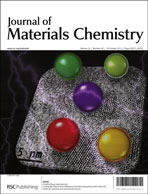In this study, a new system of integrated photocatalytic adsorbents (IPCAs), three-dimensional wormhole-like mesoporous titanosilicate/reduced graphene oxide layered composites, were prepared with various Ti/Si ratios. The reduced graphene oxide (RGO) nanosheets played the role of giant two-dimensional (2D) platforms for the deposition, spreading and growth of mesostructured layers, leading to a significant enhancement in mesoporosity. The substitution of titanium species into the mesoporous silica/RGO significantly changed the textural, physicochemical and optical properties. Gradually increasing the Ti doping content dramatically promoted the adsorptivity and UV-photocatalytic degradation of the dye contaminant; however, an excess dosage (20 mol%) inhibited the UV activity. This could be attributed to the changes in the coordination geometry and electronic states of Ti species in the composites. The IPCAs that dominantly contained highly dispersed and isolated Ti-oxide species in tetrahedral coordination within a mesostructured framework exhibited much higher photoactivity than those composed of aggregated and octahedrally coordinated Ti species due to the formation of efficient charge-transfer excited states.

You have access to this article
 Please wait while we load your content...
Something went wrong. Try again?
Please wait while we load your content...
Something went wrong. Try again?


 Please wait while we load your content...
Please wait while we load your content...